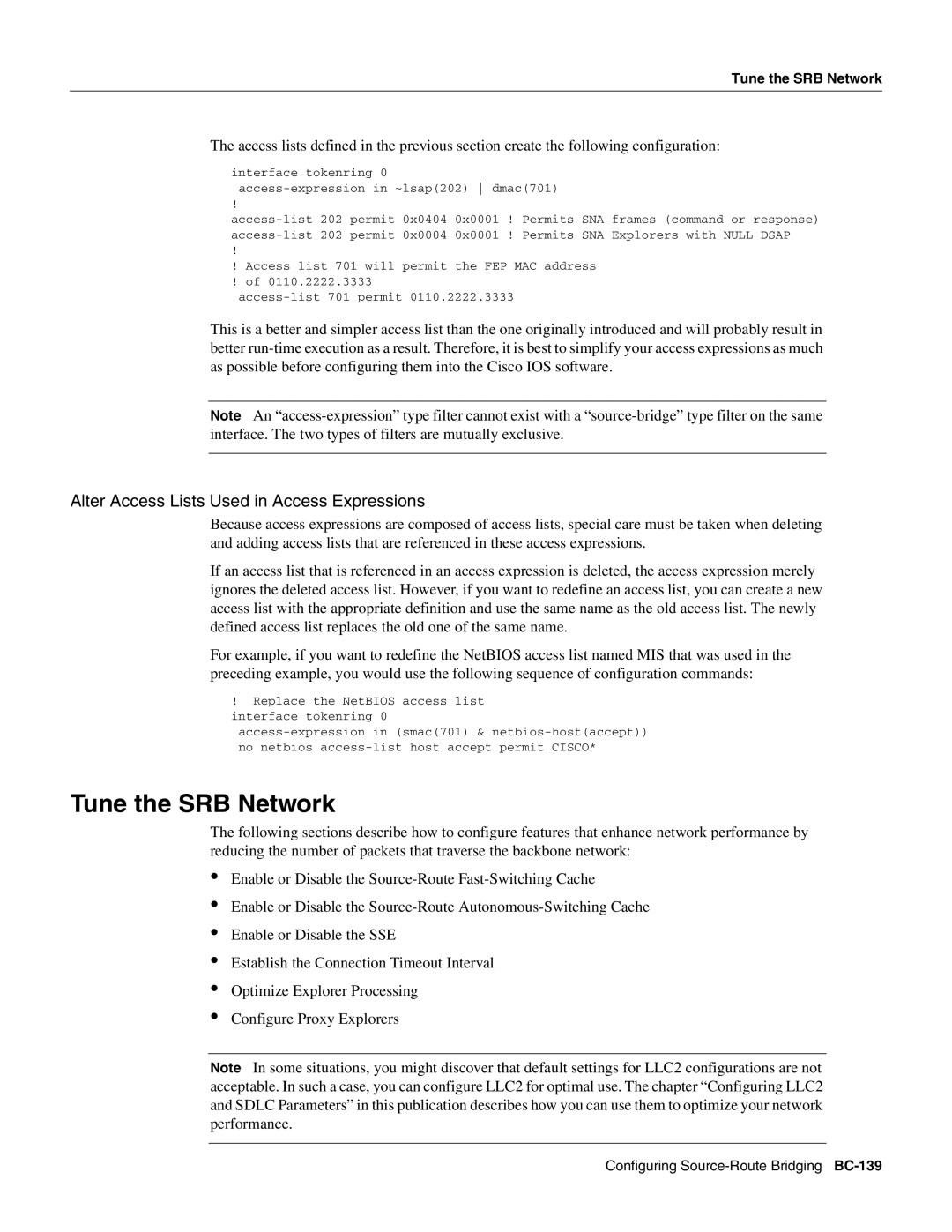
Tune the SRB Network
The access lists defined in the previous section create the following configuration:
interface tokenring 0
access-expression in ~lsap(202) dmac(701)
!
!
!Access list 701 will permit the FEP MAC address
!of 0110.2222.3333
This is a better and simpler access list than the one originally introduced and will probably result in better
Note An
Alter Access Lists Used in Access Expressions
Because access expressions are composed of access lists, special care must be taken when deleting and adding access lists that are referenced in these access expressions.
If an access list that is referenced in an access expression is deleted, the access expression merely ignores the deleted access list. However, if you want to redefine an access list, you can create a new access list with the appropriate definition and use the same name as the old access list. The newly defined access list replaces the old one of the same name.
For example, if you want to redefine the NetBIOS access list named MIS that was used in the preceding example, you would use the following sequence of configuration commands:
!Replace the NetBIOS access list interface tokenring 0
Tune the SRB Network
The following sections describe how to configure features that enhance network performance by reducing the number of packets that traverse the backbone network:
•
•
•
•
•
•
Enable or Disable the
Enable or Disable the
Enable or Disable the SSE
Establish the Connection Timeout Interval
Optimize Explorer Processing
Configure Proxy Explorers
Note In some situations, you might discover that default settings for LLC2 configurations are not acceptable. In such a case, you can configure LLC2 for optimal use. The chapter “Configuring LLC2 and SDLC Parameters” in this publication describes how you can use them to optimize your network performance.
Configuring
